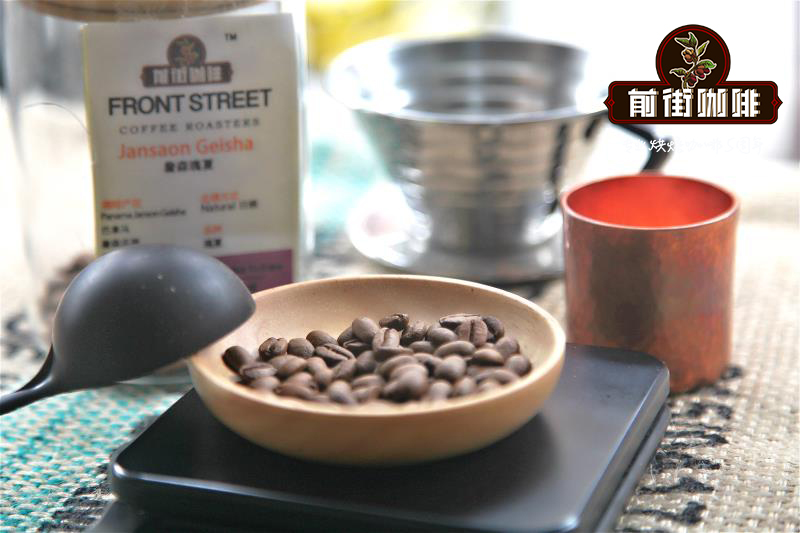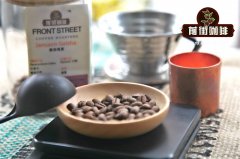Coffee bean varieties coffee bean varieties classified coffee varieties

Professional coffee knowledge exchange more coffee bean information please follow the coffee workshop (Wechat official account cafe_style)
Among the global coffee, Arabica accounts for about 70% of the total output, which has important commercial value. Arabica species spread to all parts of the world from the Arabian Peninsula, and subspecies such as Tibica species and slope species appeared according to the route of transmission, and then many branching varieties were produced because of mutation and mating.
Variety
Slope side species-[characterized by milder taste]
The bourbon provenance comes from Ethiopia and is a mutant that appears on the island of Bourbon on the first floor. this variety has also spread to places such as East Africa and Brazil. The coffee trees planted in bourbon can reach up to 4ft 5 meters in height. The branches will grow upward, and their young leaves will appear green. Usually, farmers will cut the length of the technical leaves of bourbon plants to about 2 meters to facilitate harvesting. Although this variety is similar to the iron card species, the bourbon species is stronger and has more yield than the iron card species. The coffee brewed with bourbon is mild in taste and the proportion of acidity and mellowness is just right.
Elephant bean seed-[suitable for planting on the plateau]
The elephant bean species is a mutant of Tibica species, which was found in the Brazilian state of Basiya in 1870. Coffee trees like beans are taller, even higher than other coffee trees such as bourbon and Tibica. The seed size of this variety is larger, but the yield is rare. Although the coffee beans grown like beans are larger and more precious, the coffee brewed does not have a particularly unique aroma.
Ken special-[strong varieties resistant to rust]
Ken, which grows in India, is a mutant of Tibica. The variety was discovered in the 1920s at Doddengudda Manor, owned by an Englishman, Robert Kent, in Mysore, India. Because of its resistance to rust, it was quite popular with growers in the 1940s. At present, most of Ken specialties are planted in Tanzania, and the quality of cup test is also very high. The aroma of Ken's special brewed coffee is fuller and deeper than that of bourbon.
Dwarf tree species
Parkas-[mostly cultivated in El Salvador]
The Pacas species is a mutant of the bourbon species, which was found at Pacas Manor in El Salvador in 1956. The size of raw beans is smaller, there are more branches and leaves growing on the trunk and the spacing is narrow. Because the fruit of Parkas is easier to mature, its harvest is also higher. The Pacas species is suitable for planting in lowlands and its drought tolerance makes it suitable for sandy soil. The higher the planting ground of Pacas, the better its quality. The coffee brewed from this variety has a strong aroma, and in addition to El Salvador, Parkas is also grown in parts of Honduras.
Kaddura species-[suitable for intensive planting]
Kaddura species is a high quality mutant of bourbon species, which was found in Brazil in 1935. The trees are only 2 meters tall, with thick and short trunks and many technical leaves. The Kaddura species can adapt to a variety of planting environments, and it is grown in many parts of Central America. The yield of Kaddura is extremely high, which is about 3 times that of Tibica. Raw beans are smaller, with an average sieve size of 16.
Natural mating species
New World species-[varieties with fixed fruit ripening period]
The new world species was discovered in Sao Paulo, Brazil in 1943. It belongs to the natural mating between bourbon and Sudodala. The New World species is also one of the largest varieties cultivated in Brazil. This variety has strong growth ability and can tolerate diseases and insect pests, so it has more yield. The coffee brewed by the New World species has a milder aroma.
Akai subspecies-[varieties suitable for mechanical harvesting]
Among the new world species developed by the Chippinas agricultural experimental site in Brazil, the species with larger seeds is Akaia. The Akaia species is the same as the New World species, with tall trees and short branches and leaves. If you look down from above, you can find that the diameter of the whole tree is relatively small. The aroma of the coffee brewed by the Akaia species is roughly the same as that of the New World species.
Artificial mating species
Pacamara species-[varieties with low yields]
Pacamara is a kind of artificial mating between Pacas and elephant bean. The leaves are dark green and the leaf edges are wavy. The yield of Pacamara species is small, only a small amount is grown in El Salvador, Guatemala and Nicaragua. The coffee brewed from this variety is similar to Tibica, with pure aroma and gentle taste, but low alcohol.
Kaduai-[one of the varieties widely cultivated in Brazil]
Kaduai, which appeared in 1949, is a mating between New World species and Kaddura species with high yield. This variety is suitable for planting in areas with strong wind and rain, but as the fruit is easy to fall from the branches, sufficient fertilizer is still needed. The cup test quality of Kaduai is good, but the overall flavor is still insipid.
Specially selected species
SL28- [mostly planted in Kenya]
SL28 was discovered and propagated in 1935 by Scott Lab, the agency responsible for coffee research in Kenya at the time. SL refers to the acronym of Scott Laboratories, and the number in the variety name represents the characteristics of each variety. SL28 can tolerate drying early, is suitable for planting on the plateau and has a very high yield. SL28 brewed coffee with strong acidity and mellowness, and its cup test quality is also quite high.
SL34- [extremely high yield and drought tolerance]
SL34 is a variety bred by Scott laboratory in 1935. The coffee brewed by SL34 has rich sour taste and mellowness, and has a variety of different aromas, and its cup test quality is also very high.
Important Notice :
前街咖啡 FrontStreet Coffee has moved to new addredd:
FrontStreet Coffee Address: 315,Donghua East Road,GuangZhou
Tel:020 38364473
- Prev

Factors affecting Coffee pattern how to make Coffee pattern
Professional coffee knowledge exchange more coffee bean information please follow the coffee workshop (Wechat official account cafe_style) as a barista, coffee is our business card, when customers order a cup of latte, we also hope to make a nice cup of flowers. Every time when customers are surprised or rejoiced by the pattern of flowers in the cup, it is also the happiest for every barista.
- Next

Fine coffee grade Single coffee type How to divide coffee grade
Professional coffee knowledge exchange More coffee bean information Please pay attention to the coffee workshop (Weixin Official Accounts cafe_style) SCAA sets the evaluation level of fine coffee, including the physical evaluation of raw beans and the sensory evaluation of roasting all. SCAJ defines specialty coffee and other coffees. SCAA's fine coffee evaluation In this evaluation, SCAA has set the following criteria:
Related
- Beginners will see the "Coffee pull flower" guide!
- What is the difference between ice blog purified milk and ordinary milk coffee?
- Why is the Philippines the largest producer of crops in Liberia?
- For coffee extraction, should the fine powder be retained?
- How does extracted espresso fill pressed powder? How much strength does it take to press the powder?
- How to make jasmine cold extract coffee? Is the jasmine + latte good?
- Will this little toy really make the coffee taste better? How does Lily Drip affect coffee extraction?
- Will the action of slapping the filter cup also affect coffee extraction?
- What's the difference between powder-to-water ratio and powder-to-liquid ratio?
- What is the Ethiopian local species? What does it have to do with Heirloom native species?

